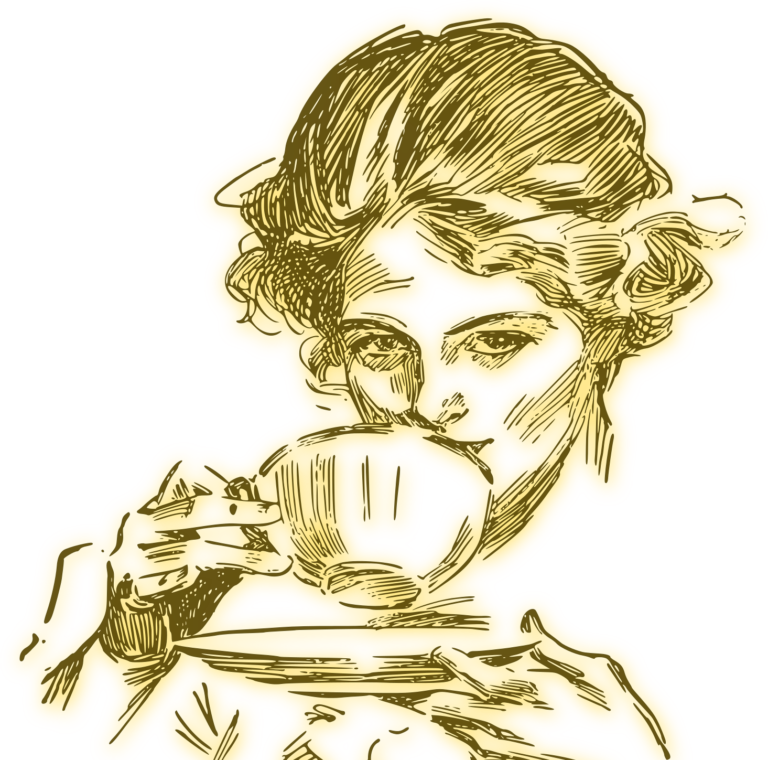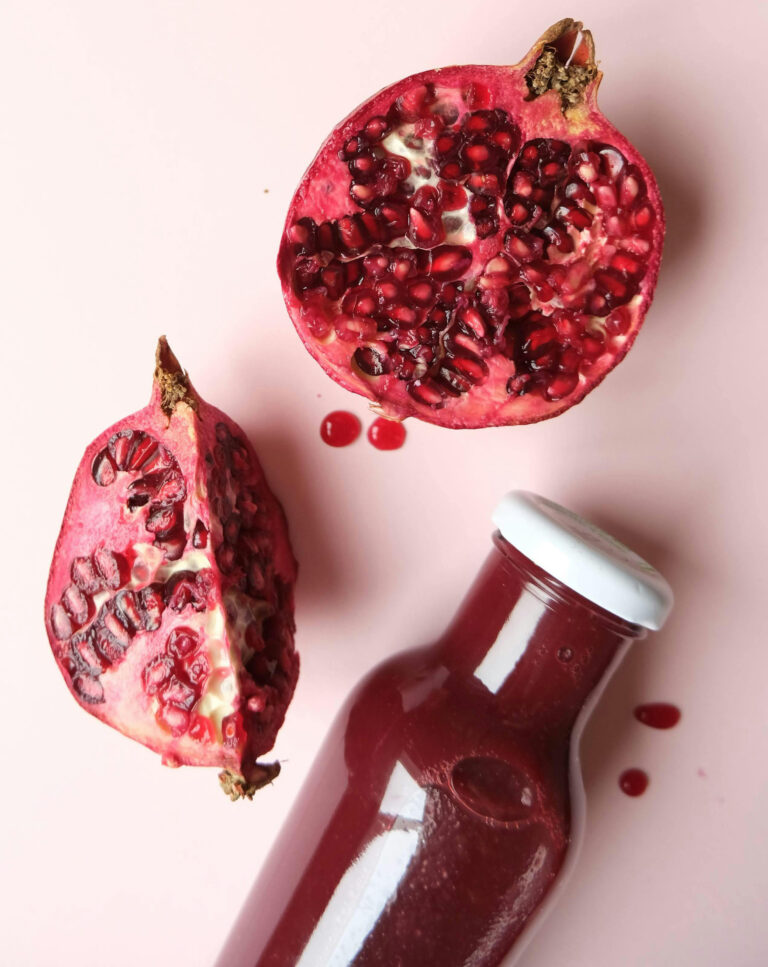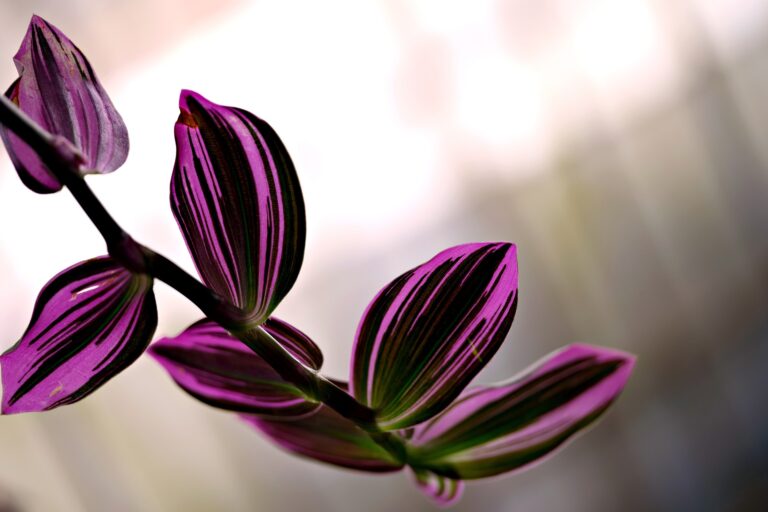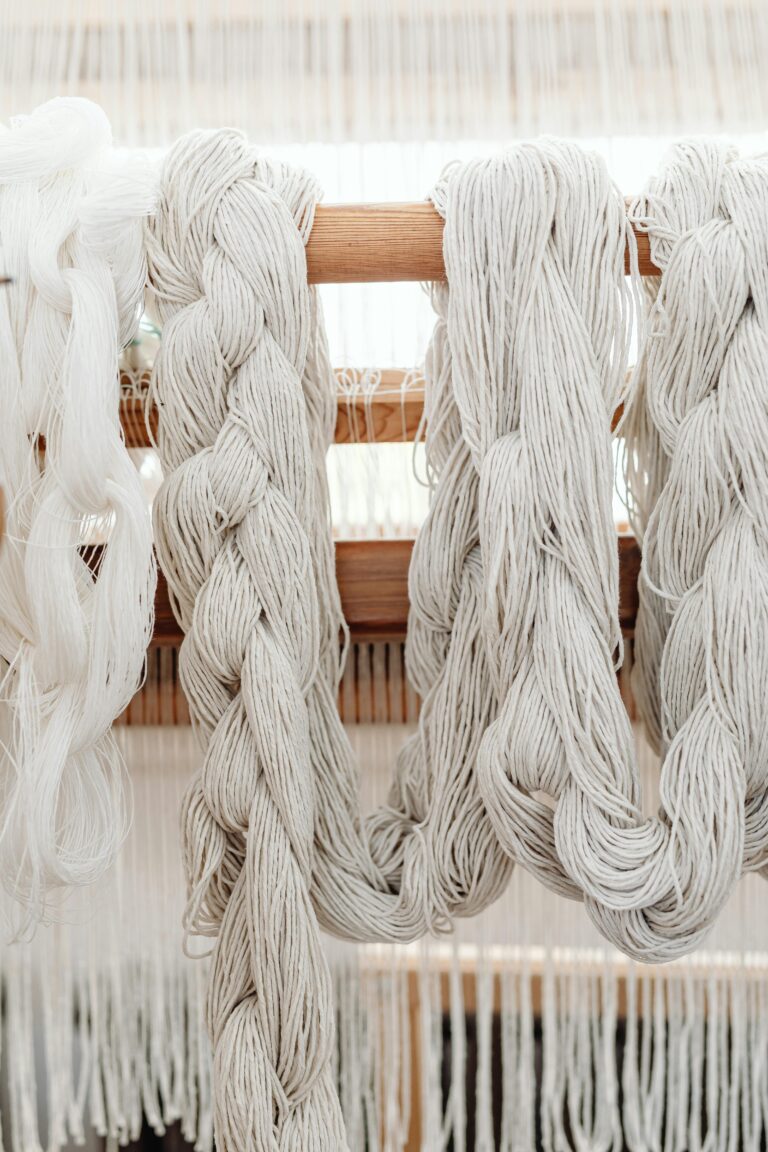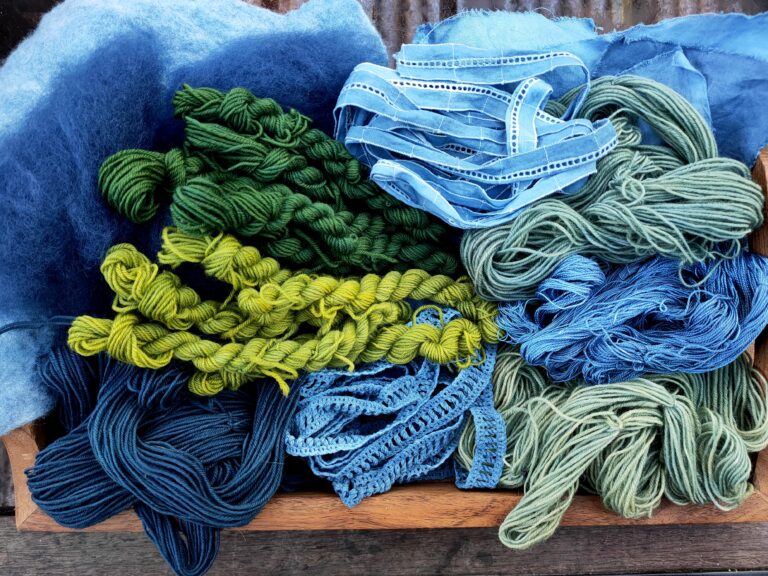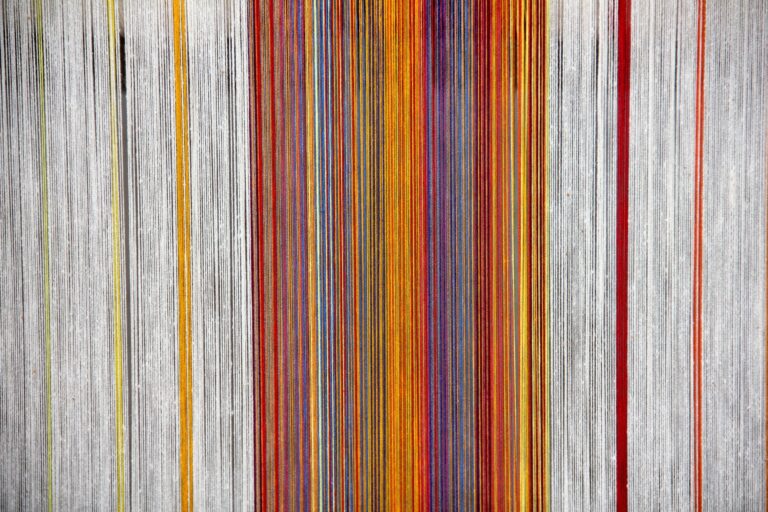Dyeing with indigo for a great variety of colours

Dyeing with indigo can not only bring blue into your palette, but it can also help with a variety of other colours.

Indigo.
Most people have heard of indigo for natural dyeing. It has been around for thousands of years and is still one of only a handful of ways to dye blue.
The indigo dye comes from the leaves and does require a vatting process to be used to extract the beautiful blue colour. There are a number of different ways to create a dye vat and a lot of videos and instructions on how to do this.
I have done a lot of vatting in my time with indigo, but by no means am I an expert, so I will not go into depth on how the process is done here. If you want to have ago at indigo dyeing, I encourage you to buy a kit which comes with everything you need and full instructions on how to get the best results with what is in your kit.
Instead today we will look at some of the different variables I have tried, while dyeing with indigo, to give you a little guidance as to what I have found worked and what hasn’t.
I will say that I use a vat that uses Sodium Hydrosulphite as the deoxidating agent, but as I said there are plenty of instructions on the internet if you would like to have a go with a more natural vatting system.
Dyeing with Indigo on wool
The best place to start with any natural dye is on wool. It takes most natural dyes much better than any other fibre and is easy to work with.
The first thing I tried dyeing with indigo was merino wool roving. In both of these pictures the first circle shows the dyed roving. The roving was not mordanted but was gentle washed before dyeing with indigo. The second shows the roving having been wet felted into a piece of felt and then the third circle is a piece of the same felt that has been left in full sun for 4 weeks.
The top rows shows wool that has been dipped into the indigo vat for 3 minutes, while in the second row, the wool has been dipped 5 times into the vat for three minutes each time.
In both instances I was not only happy with the colour I achieved but also the way it held up in the felting process and then in the sun test.
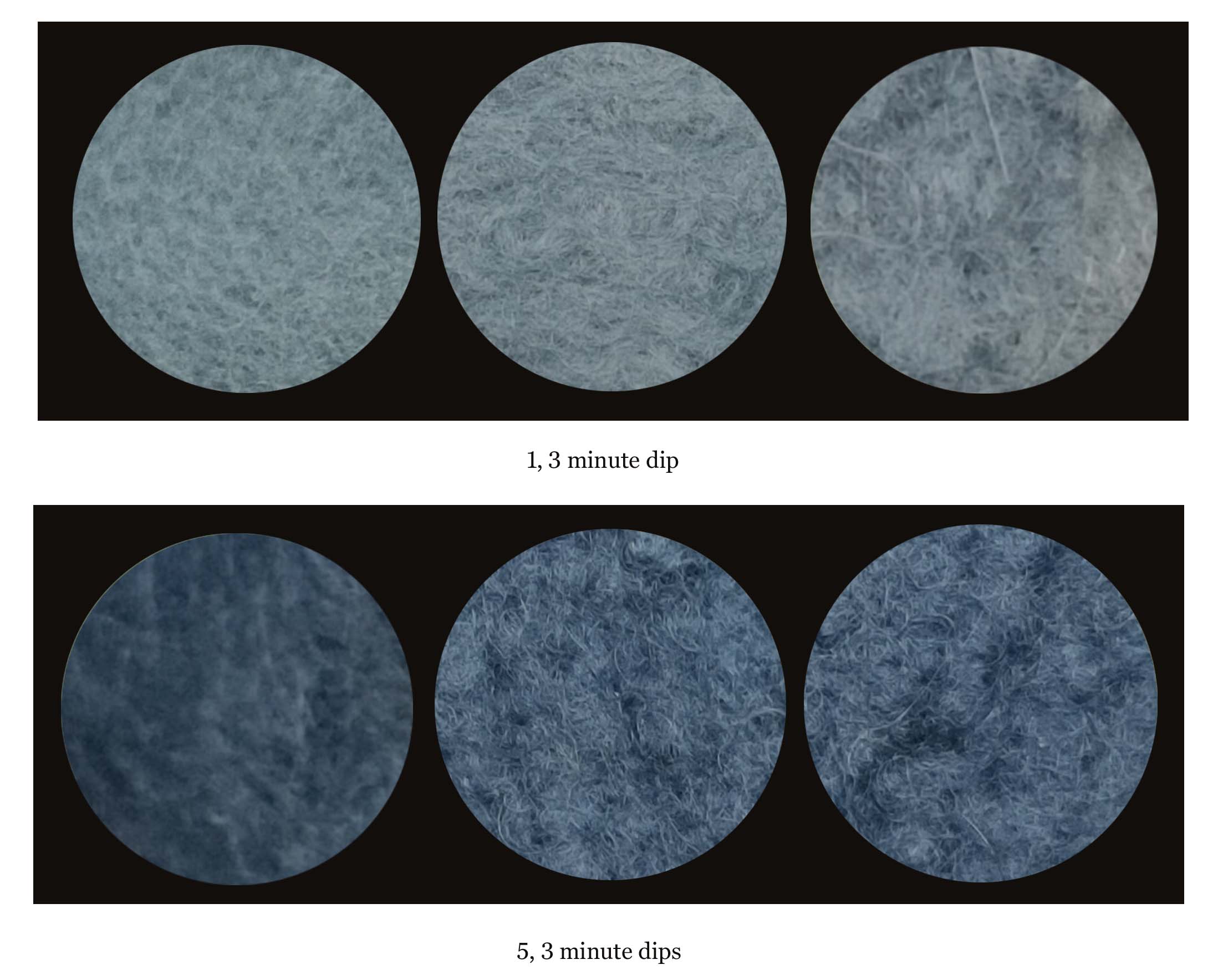
Different Colours
So while dyeing with indigo, it seemed like a good idea to over dye some felt that was left over from other dyeing sessions and see what happened. Here are the results. The second column of each picture shows the felt after 4 weeks in the sun
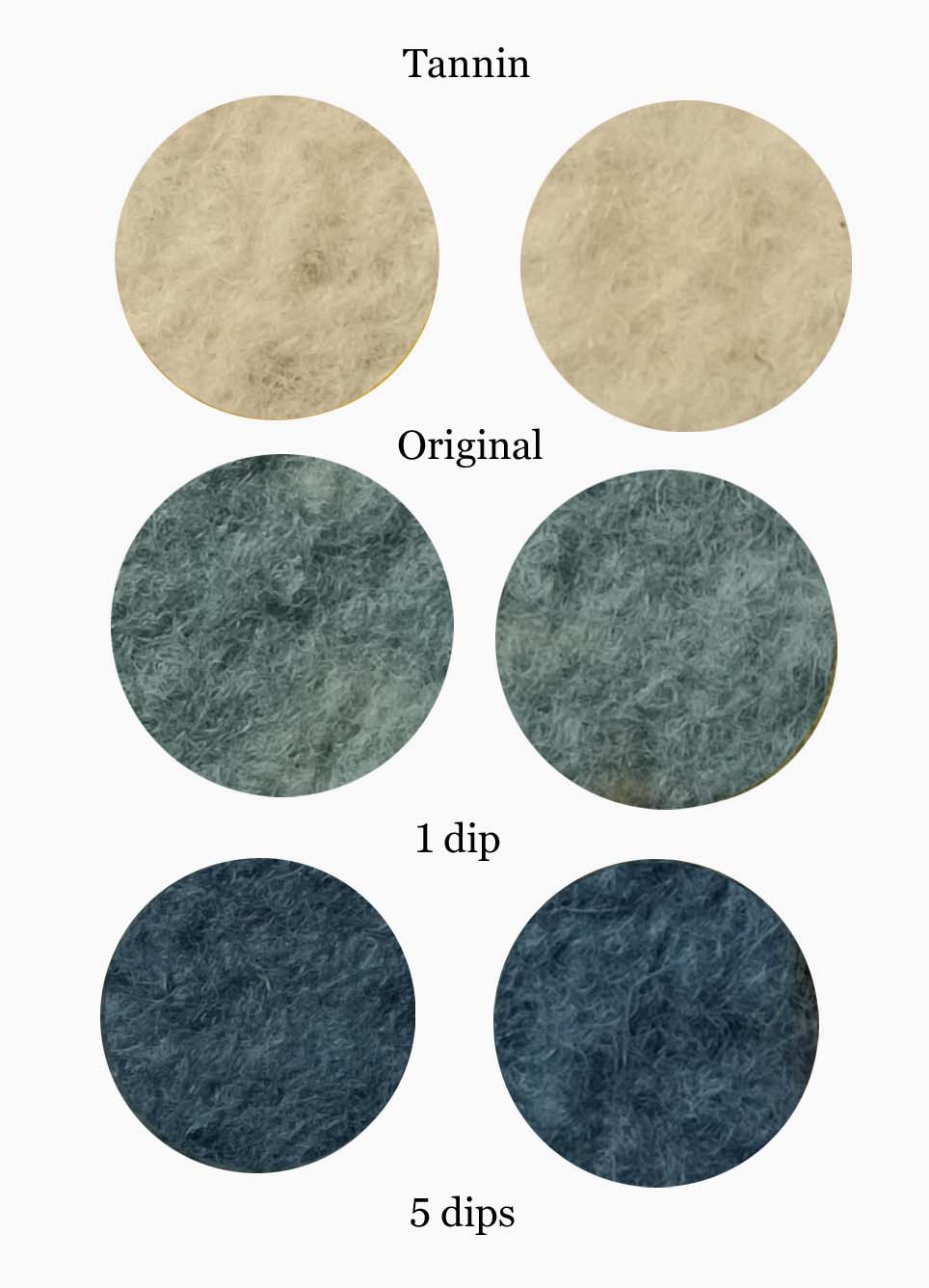
Tannin
Tannin with indigo gave a slightly greener blue. The tannin used comes from oak leaves and a solar dyed method was used for the tannin dyeing.
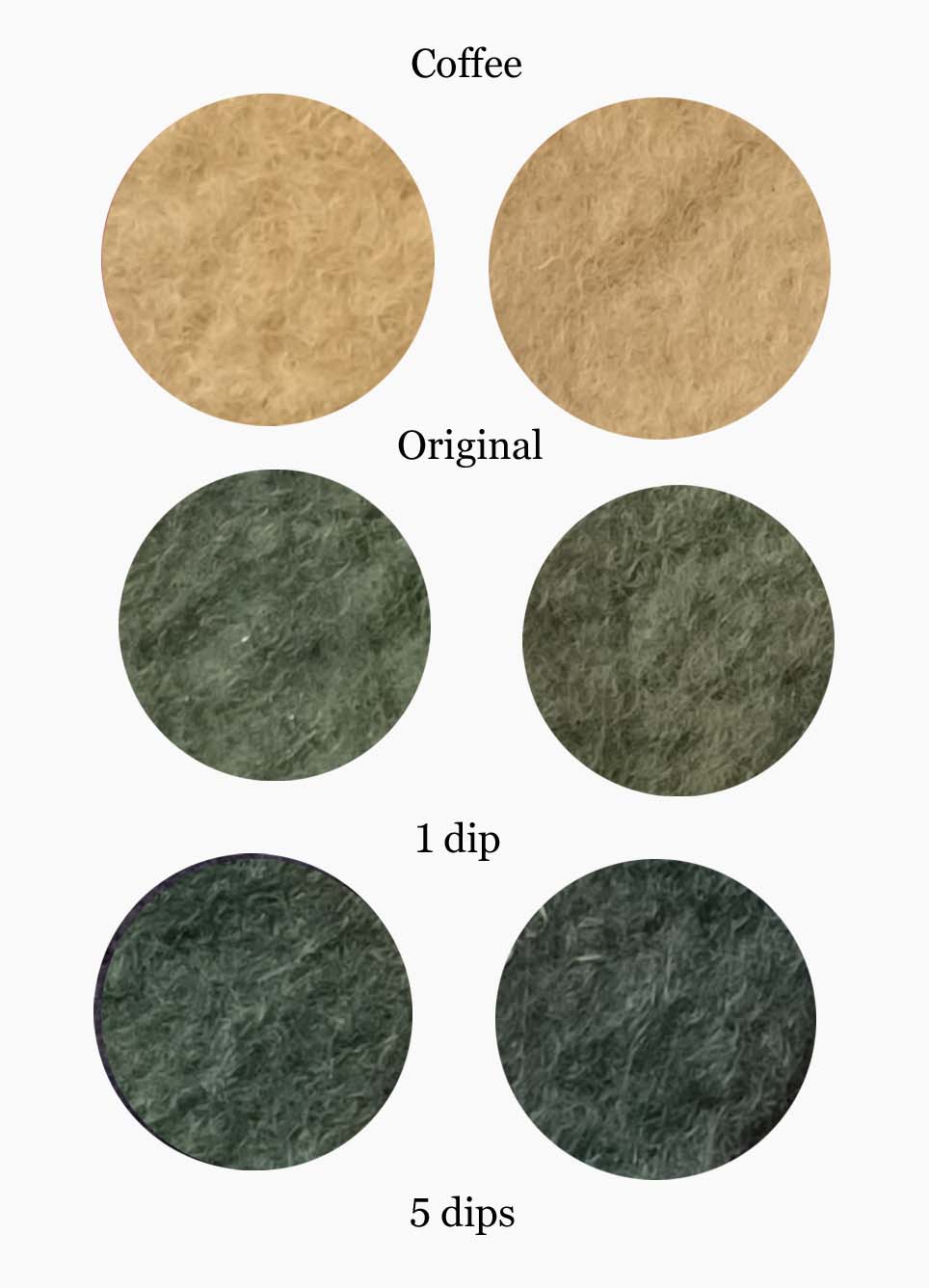
Coffee
Felt pre dyed with coffee gave a greener colour. The coffee felt had not been mordanted and solar dyed for 1 week.
If you would like to see how the coffee dyeing was done please click the link below.
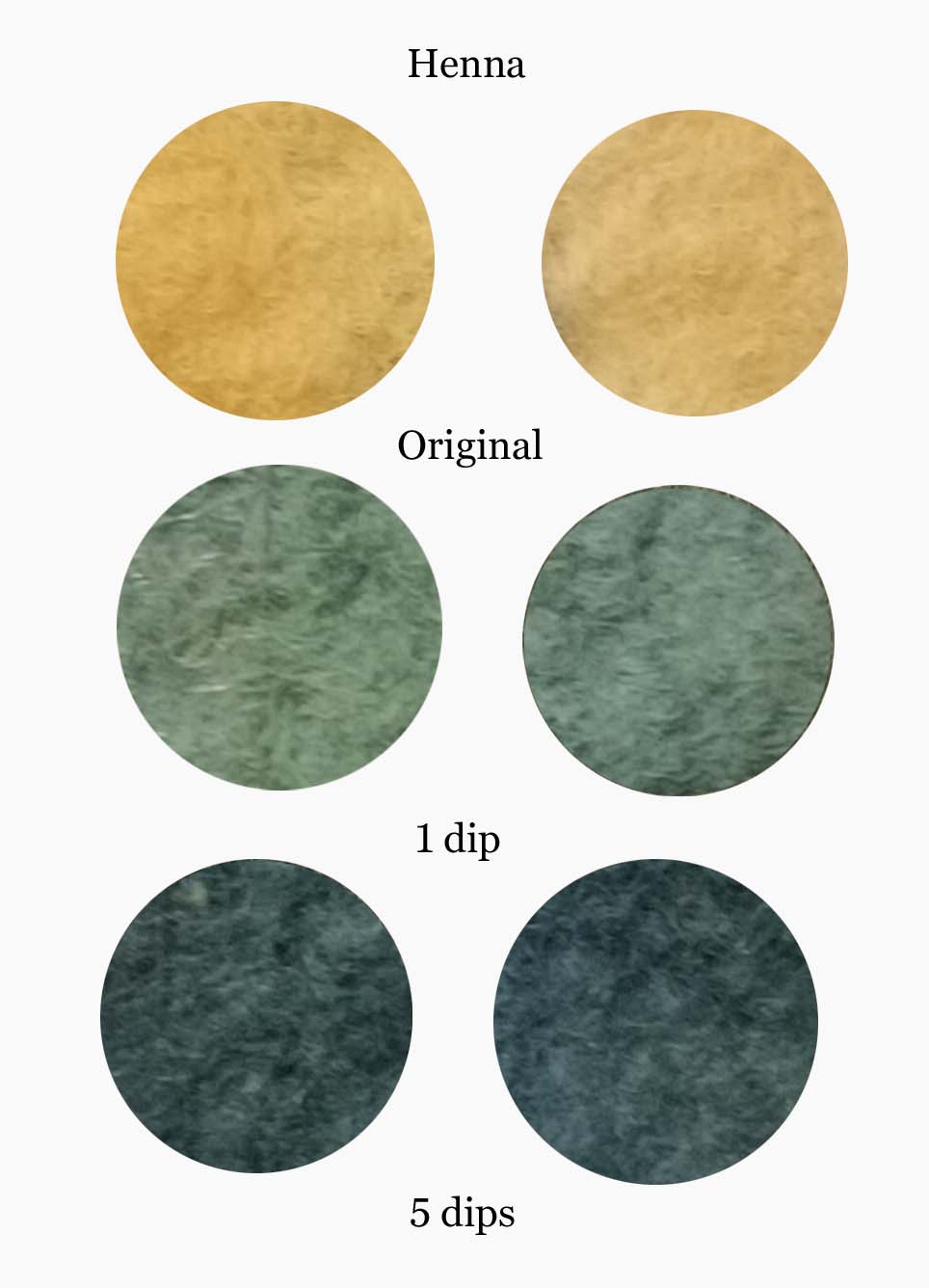
Henna
The pre dyed henna felt slightly faded in the 4 week sun which also meant that the henna and indigo dyed felt also slightly faded.
This henna dyed felt had been mordanted with alum and solar dyed for 1 week.
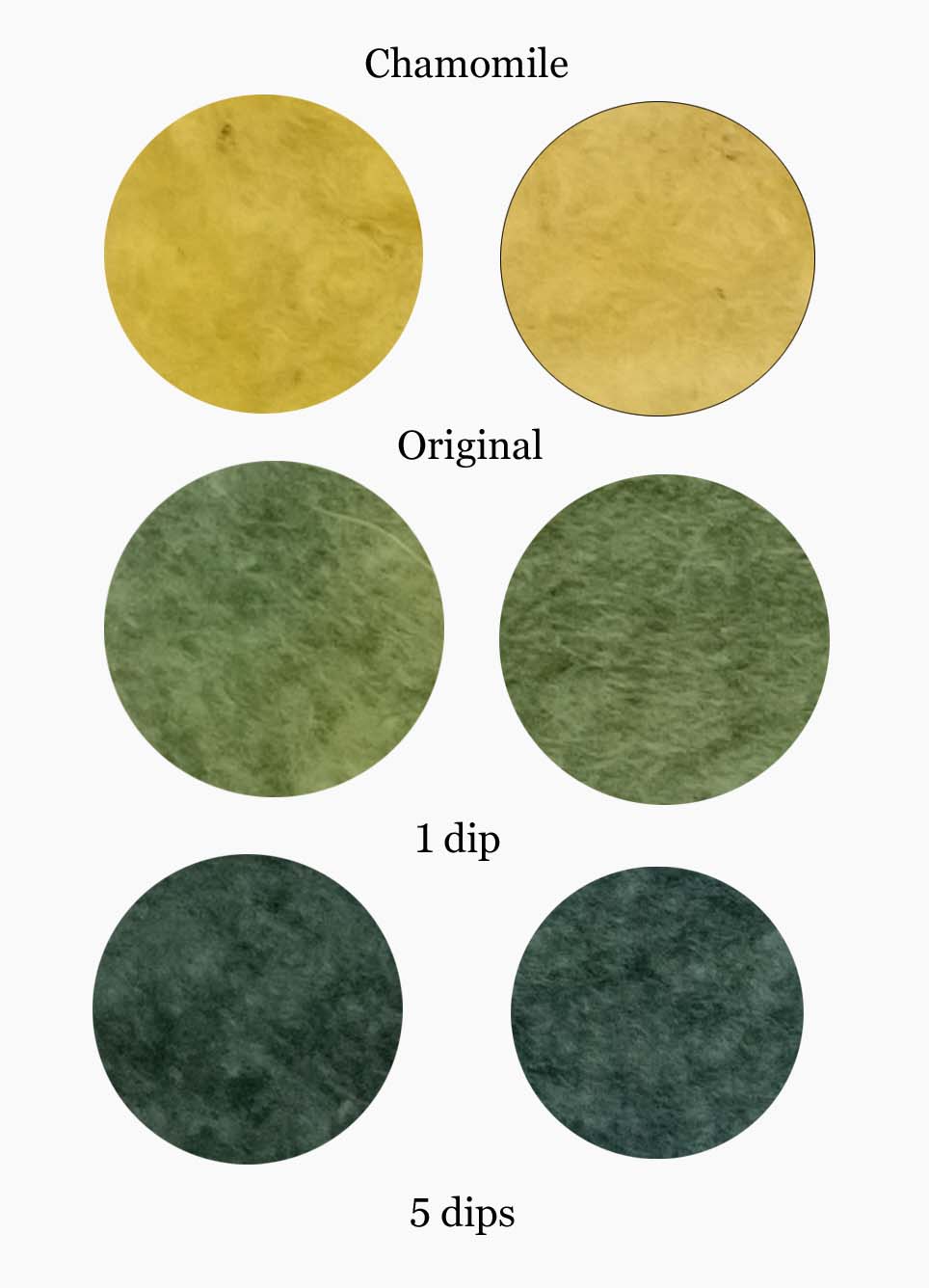
Chamomile
We are really starting to get into some good greens now. This chamomile dyed felt had been mordanted with alum and solar dyed for 1 week.
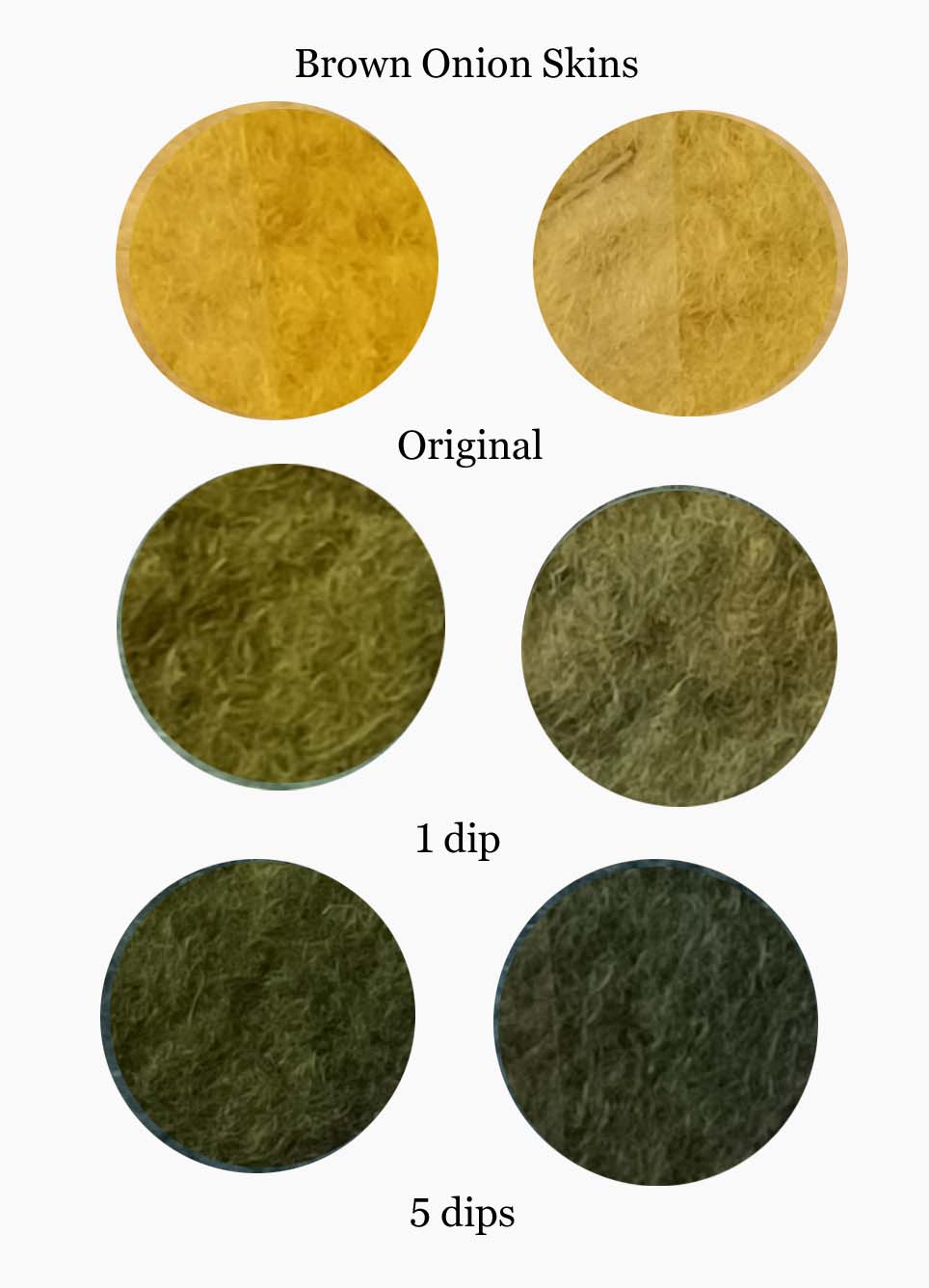
Brown Onion Skins
The combination of brown onion skins and indigo really achieved a stunning green. As you can see however all of the felts did dull a little over time.
If you would like to see how to dye with onion skins please press the button below.
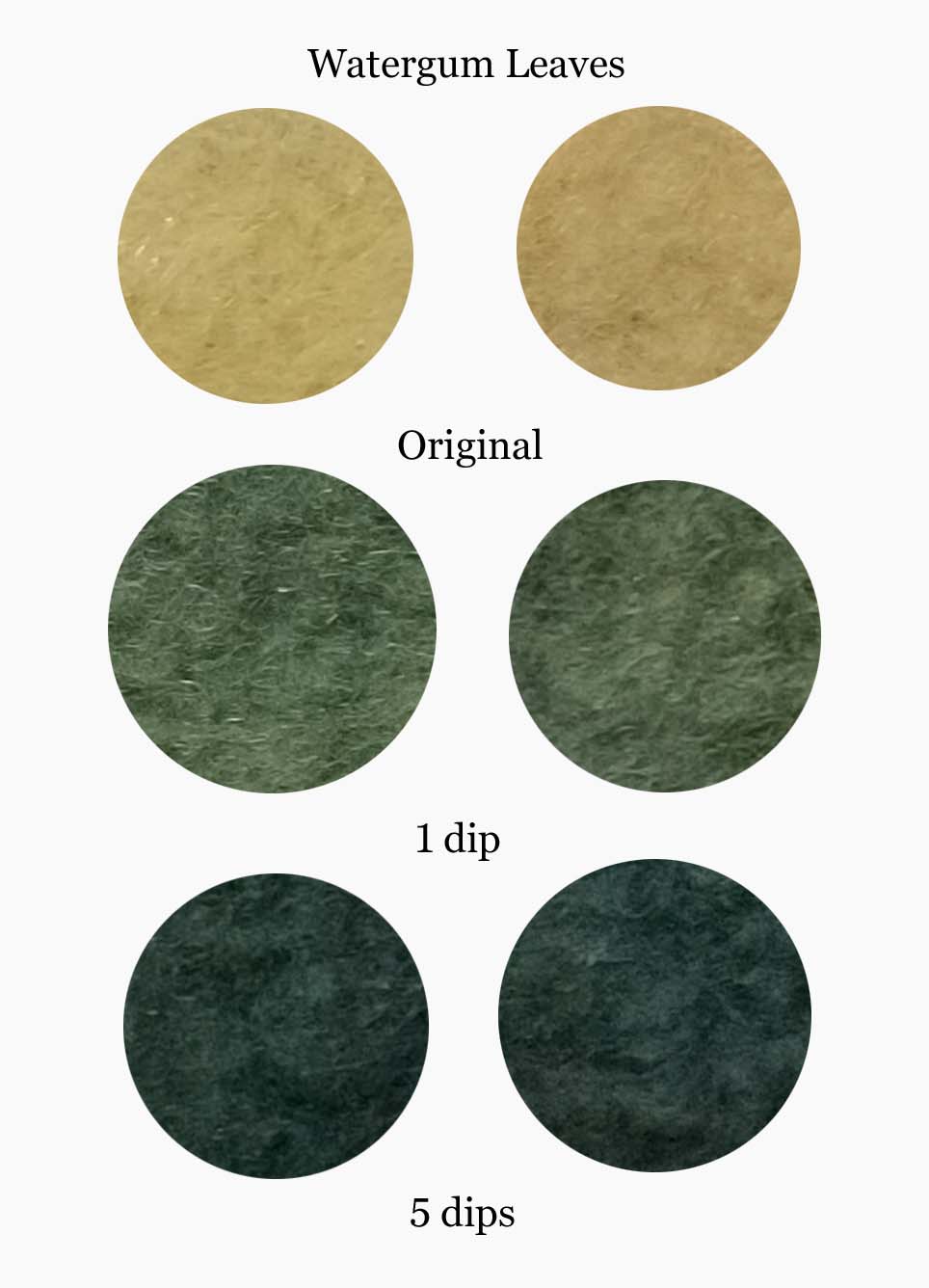
Watergum leaves
Dyeing with indigo on top of watergum leaves brought out not only a beautiful green but also a sturdy one with no fading at all.
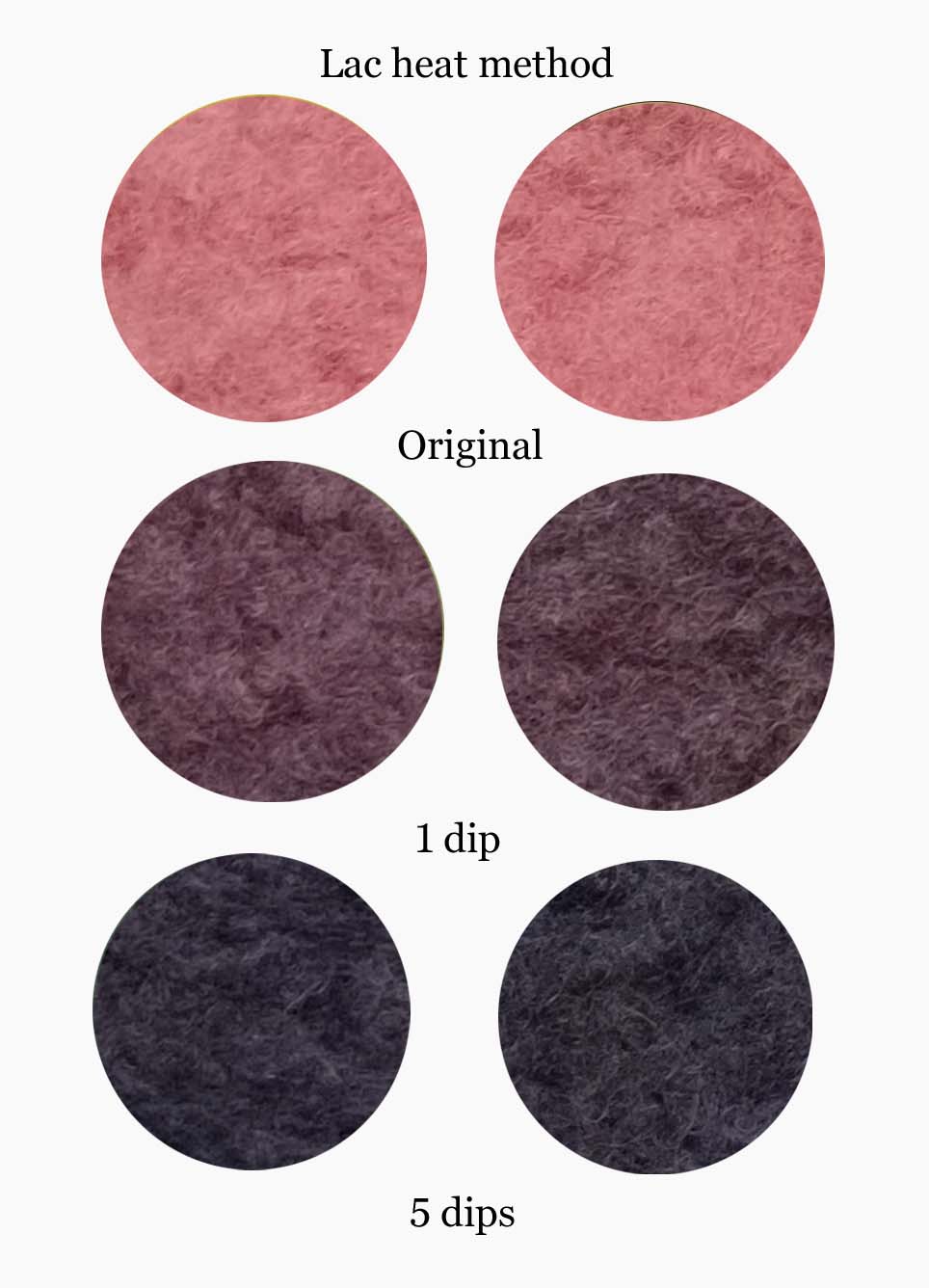
Lac
And now for something different. Indigo over Lac producing a vivid and bright purple!
If you would like to see how to dye with Lac please press the button below.
Dyeing with indigo on wool threads
I have also used indigo to dye 2ply merino wool that I use for embroidery. Here are some of the results.
This first picture shows threads that have been dyed with indigo with no mordanting and no other dyeing. The light blue is after 1 dip of 3 minutes while the darker is after 5 dips of 3 minutes.
The second row is the same thread after 1 week in the sun.
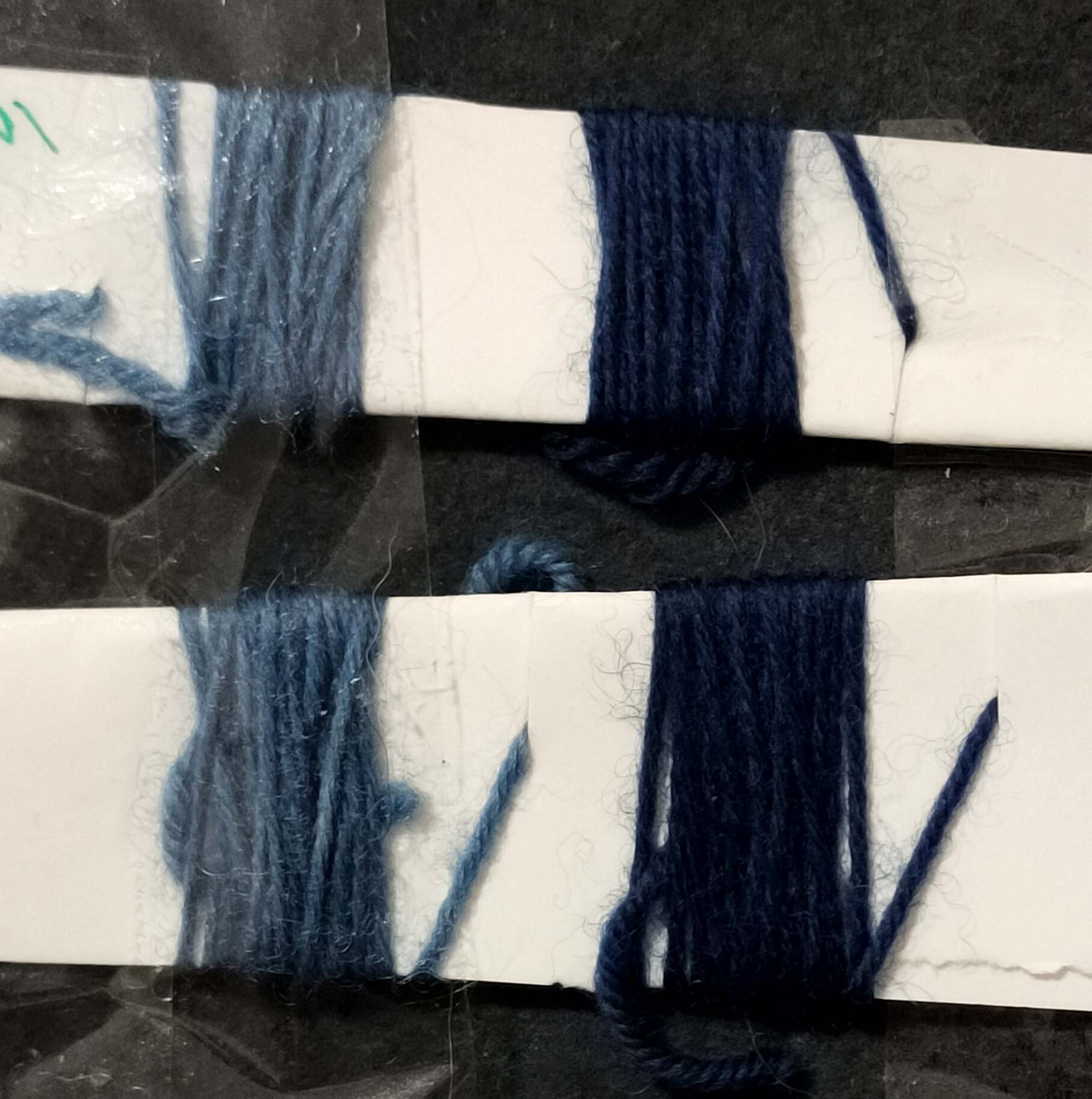
These threads have been first dyed with tanin and then dyed with indigo. The first colour has had a quick 10 second dip. The second had 2 quick 10 second dips while the third had 2 3minute dips.
This is the beauty of indigo dyeing. You can just keep dipping until you are happy with the colour.
There was no fading after 1 week in the full sun. More great news.
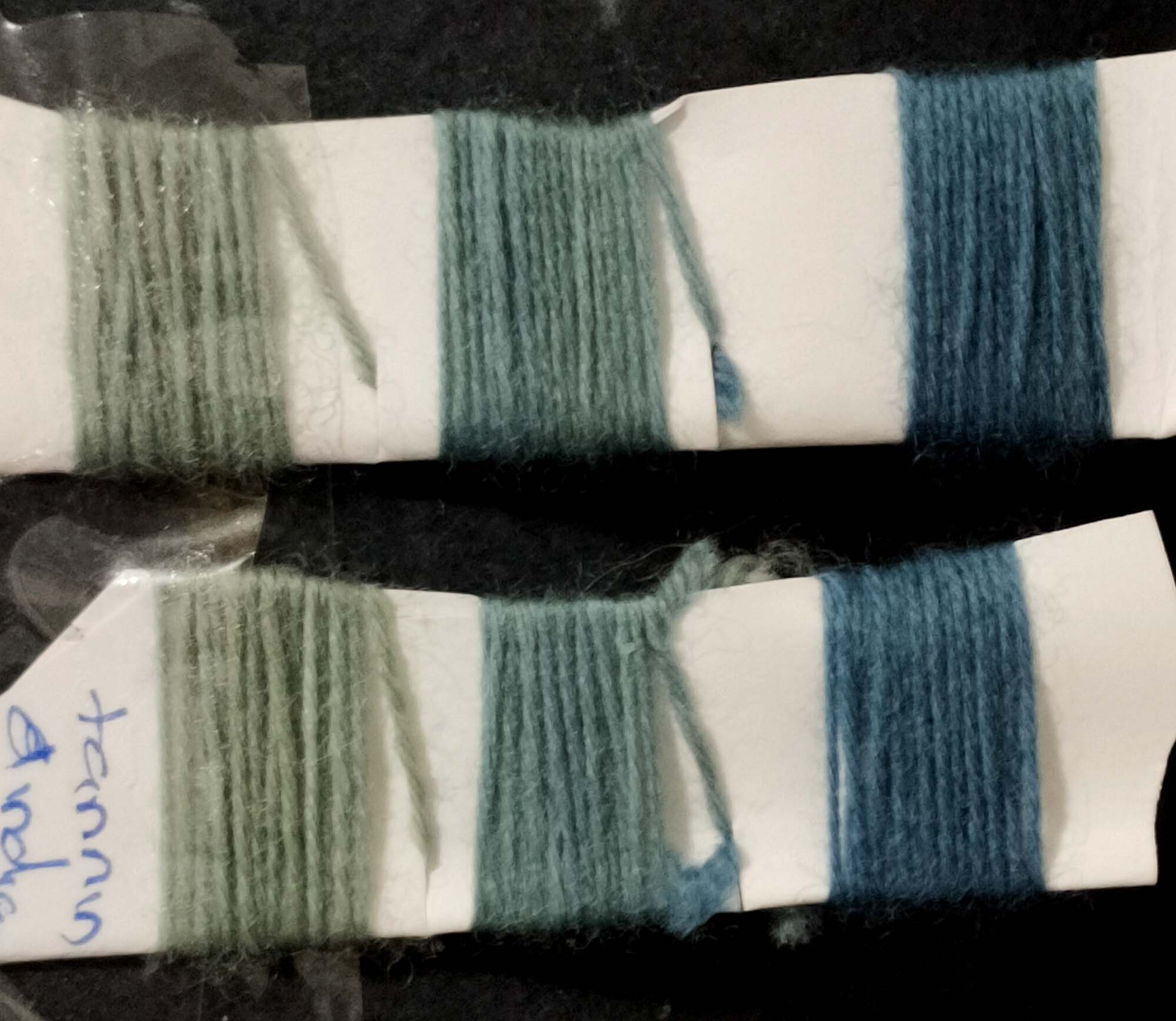
And here are some threads that have been dyed with coffee and then indigo. A lovely green though unfortunately there was a little fading after 1 week in the sun.
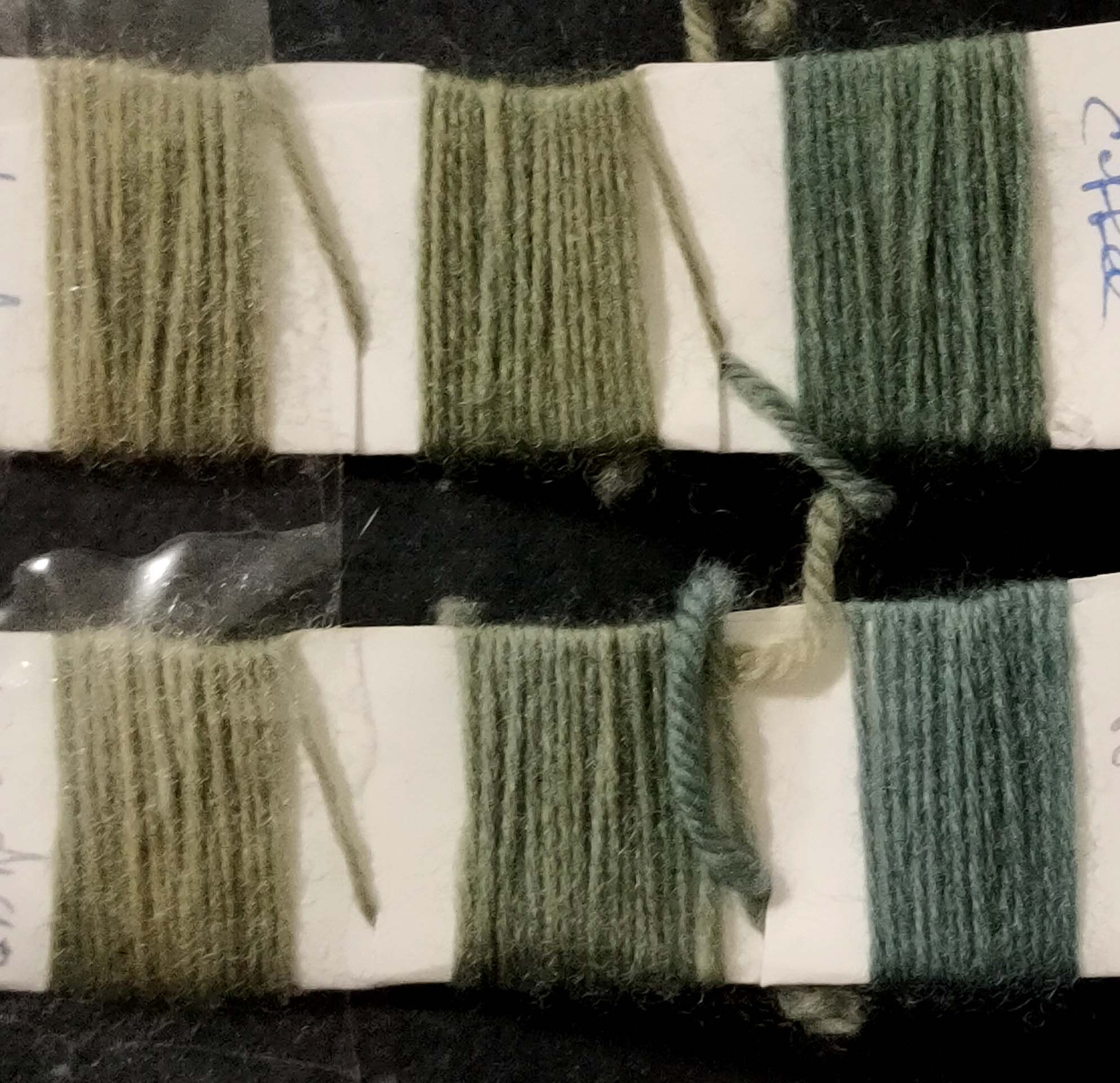
And last but not least we have the beautiful colour produced by first dyeing with watergum leaves and then with indigo. No only does it produce a brilliant green but also stayed true in the sun.
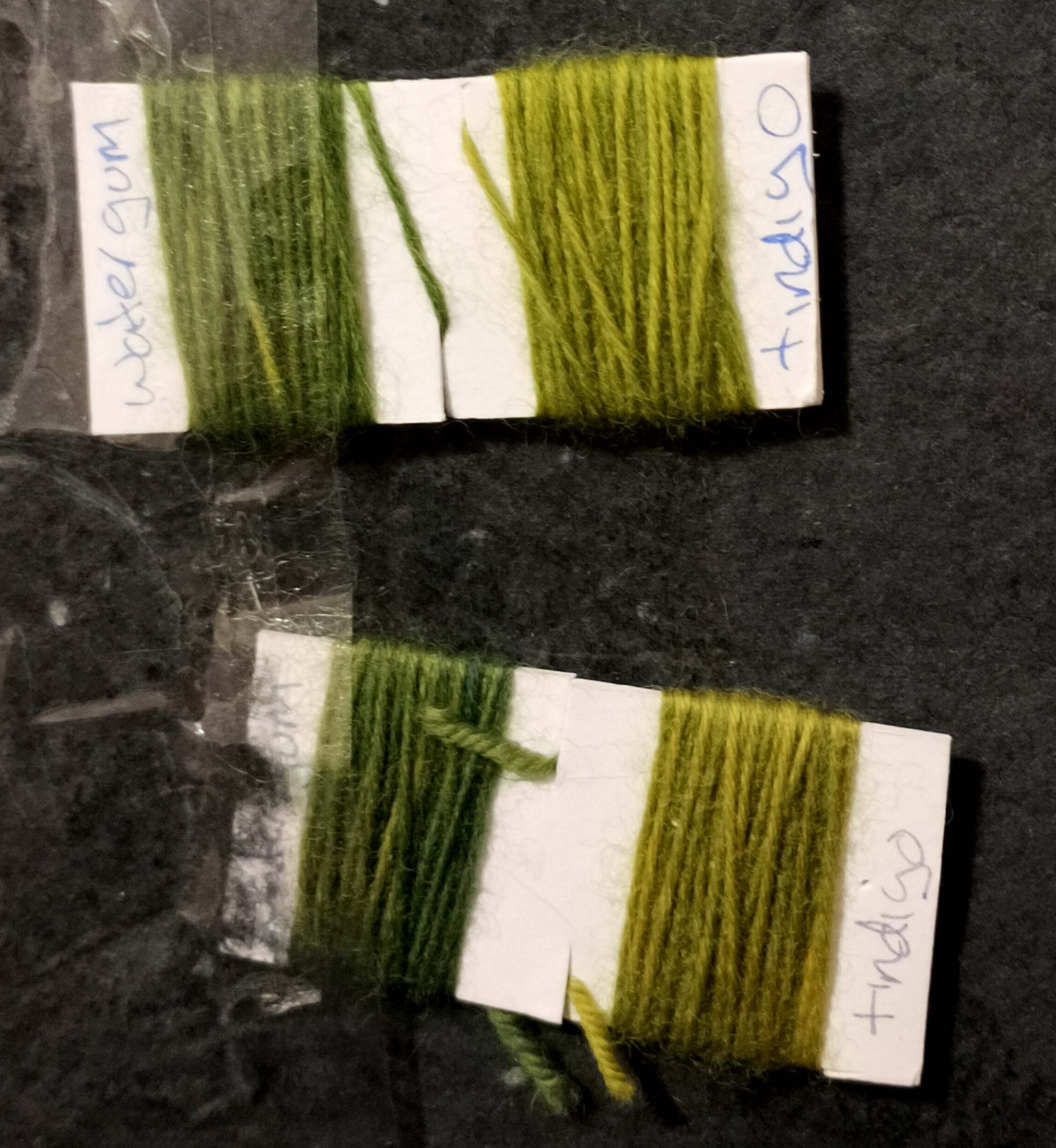
Results for dyeing with Indigo
These are just a few ways to dye with indigo. Really the combinations are endless and it really is fun to see what you end up with.
This week we have looked at wool but next week we can have a beginners look at dyeing with indigo on cotton, with a little suggestion which may surprise you.
I hope this helps and encourages you to try your own experimenting in the world of natural dyes. 🙂
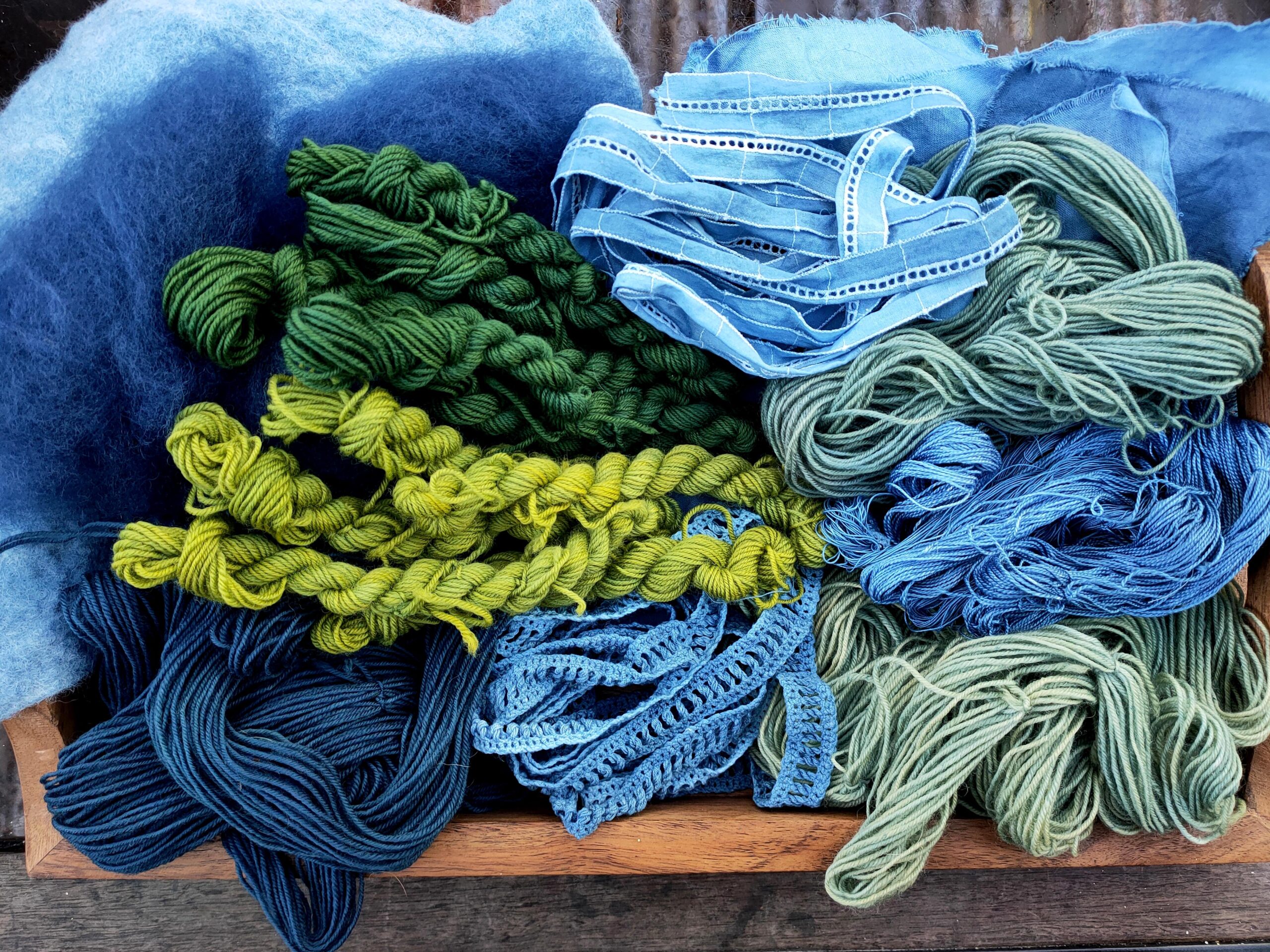
Update on threads 19/9/2024
Due to the strong colours that are produced with indigo, I wanted to check that they were able to be washed without the dye running. There are three dye sessions here. Straight Indigo, oak and indigo and watergum and indigo.
The first circle are the threads after being sprayed with water. The 2nd circle shows the same threads after being hand washed with a gentle soap and then dried. As you can see the dye did not run at all. Great results!
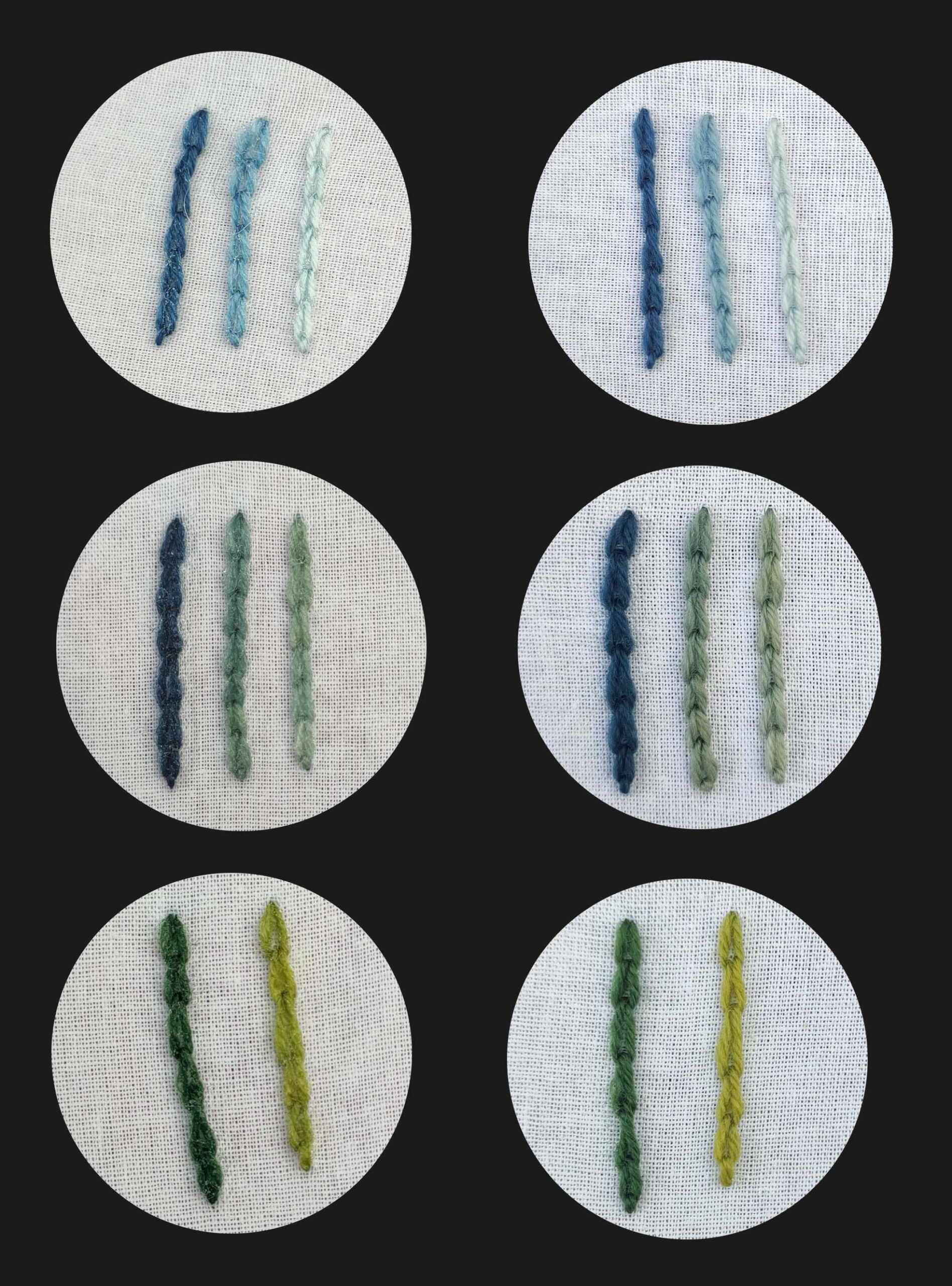
Join us on Instagram www.instagram.com/DyetoCraft
Etsy Shop Now open
If you like the idea of using organic naturally dyed threads in your craft but just don’t have the time, come and have a look at our Etsy Shop where you will find an array of beautiful colours provided by nature.

